Colin Went Down To The Water, the second single released from the new album O Sun O Moon
Composer: Bruce Cockburn
Animation by Kurt Swinghammer
(c) Linus Entertainment Inc. Marketed by True North Records.
Purchase: True North Records
Colin Went Down To The Water, the second single released from the new album O Sun O Moon
Composer: Bruce Cockburn
Animation by Kurt Swinghammer
(c) Linus Entertainment Inc. Marketed by True North Records.
Purchase: True North Records

True North has just put up a great playlist of some of Bruce’s covers.
It ranges from kd Lang to Jerry Garcia and worth hearing.
It’s currently on both
Spotify
and
Apple
The Al Purdy Songbook
by Songbook Producer Brian D. Johnson
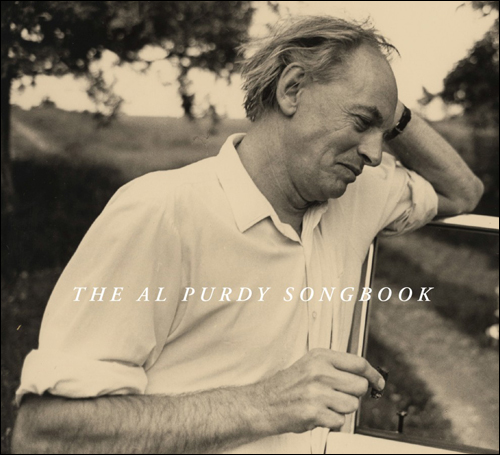
November 2018 – The Al Purdy Songbook celebrates the work of an iconic Canadian poet. Along with its sister project, the film “Al Purdy Was Here,” it was inspired by campaign to save and restore Purdy’s A-Frame home as a writing retreat for a new generation of artists.
“Bruce Cockburn was one of several contributors already deeply familiar with Purdy, and he embraced the challenge as if it were something he’d been itching to do for years. In 3 Al Purdys, a rousing six-minute epic, Bruce lets Purdy’s words come tumbling through the verses as if poured from a pitcher of draft. A generous portion of his lyrics come straight from Transient, Al’s 1967 poem about hopping boxcars on the way to Vancouver as a teenager. The song’s refrain—I’ll give you 3 Al Purdys for a twenty-dollar bill—was inspired by Bruce’s distant memory of a poet selling books on a Toronto street corner. That’s not something Purdy was ever known to have done, but it evokes the scrappy persona of a poet who could connect with the street. Bruce is the only Songbook artist who tried to capture Al’s persona in his voice, adopting a gruff swagger quite unlike anything we’ve heard from him before. This was the first song Bruce had written in two-and-a-half years, ever since becoming a father, and it kindled a new burst of songwriting that led to his 33rd album, Bone on Bone and 13th Juno Award.”
To continue reading – borealisrecords.com
July 26th, 2017 / By Bluegrass Situation Staff –
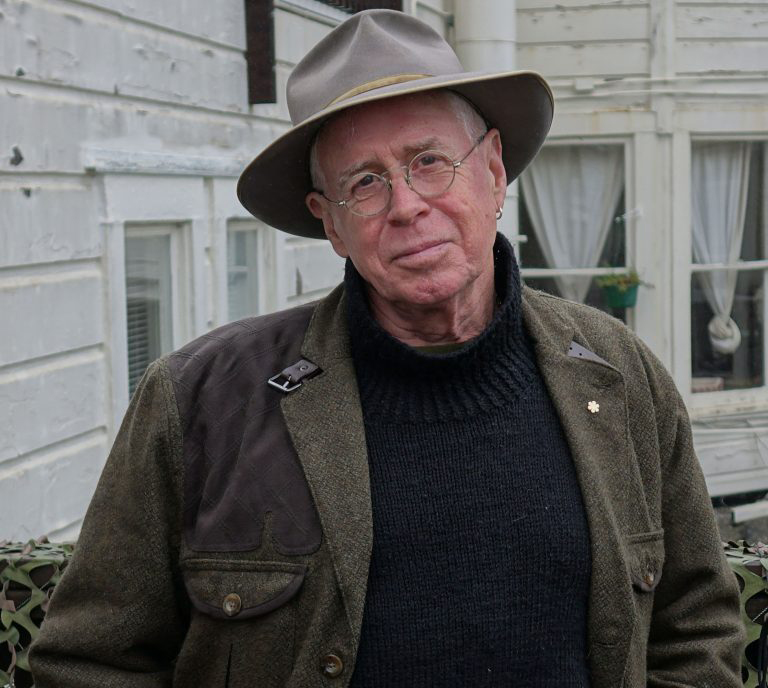
Artist: Bruce Cockburn
Hometown: San Francisco, CA
Song: “Forty Years in the Wilderness”
Album: Bone on Bone
Release Date: September 15, 2017
Label: True North Records
In Their Words: “There have been so many times in my life when an invitation has come from somewhere … the cosmos … the divine … to step out of the familiar into something new. I’ve found it’s best to listen for and follow these promptings. The song is really about that. You can stay with what you know or you can pack your bag and go where you’re called, even if it seems weird — even if you can’t see why or where you’ll end up.” — Bruce Cockburn
Credit: The Bluegrass Situation
Originally written and released in 1971 on the Sunwheel Dance album. This version was re-written & re-recorded 2003, for the Peace Songs album compilation put out by warchild.ca.
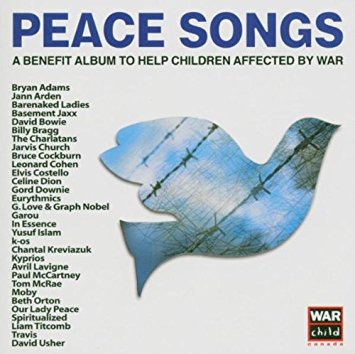
Lyrics: 2003
Go tell the sergeant-major
To get that thing repaired
The lunatics rule in the asylum
Chaos is in the air
Oh oh oh
It’s going down slow
It’s going down slow
They’re grinding the marrow of history
The ground underneath us quakes
The board of directors is looting
What’s left of the ship of state
Oh oh oh
It’s going down slow
It’s going down slow
Everybody seems to be leaving
Better say your travelling prayers
It don’t matter how you get it
It’s where do you go from there
Oh oh oh
It’s going down slow
It’s going down slow
It’s going down slow
It’s going down slow
God, damn the hands of glory
That hold the bloody firebrand high
Close the book and end the story
Of how so many men have died
Let the world retain in memory
That mighty tongues tell mighty lies
And if mankind must have an enemy
Let it be his warlike pride
Let it be his warlike pride
Recorded at Studio Frisson in Montreal on March 19, 2003.
Thanks to Daniel Keebler.
by Brad Wheeler – The Globe and Mail
‘The wood doesn’t lie.”
At her Cabbagetown studio, the luthier Linda Manzer talks about the organic nature of her trade. Holding a guitar of her invention, she says you can’t make wood what it is not, that you have to co-operate with it, that you have to be honest with yourself. “You can’t fake it,” is how she puts it.
Of course, the honesty Manzer speaks of doesn’t refer solely to the craft of guitar making. A novelist or a ceramist would agree with her; even a cocktail mixologist – the booze doesn’t lie? – would find common ground here.
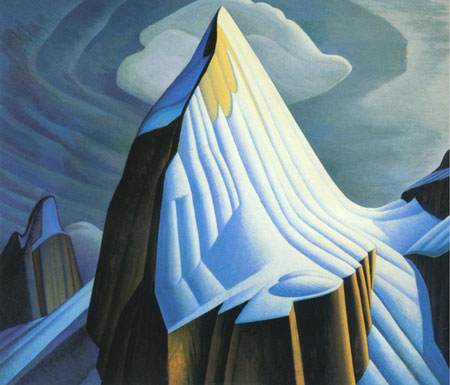
As would a painter. The guitar Manzer cradles is a salute to the Canadian landscape rock star and Group of Seven ringleader Lawren Harris. It’s a doozy, untraditional with its grooved ridges on the bottom, icy-blue splashes of colour on the top, big mechanical drawing on the back and a second neck thrusting outward from the body like a Harris-y mountain peak.
The acoustic instrument is part of The Group of Seven Guitar Project, an exhibit commissioned by the McMichael Canadian Art Collection and set to open on May 6, in time for the country’s sesquicentennial summer.
Seven masterwork guitars were made by seven of the country’s top luthiers – each instrument an homage to a particular Group of Seven member. An eighth instrument (a baritone guitar that honours the rough-cut woodland enthusiast Tom Thomson) was a creation by committee.
While the project will be seen as a unique commemoration of Harris, A.Y. Jackson, Arthur Lismer, et al, what it really represents is a party thrown for the Canadian guitar makers themselves, a group that has carved out an impressive standing in the luthier world. Seven guitar-makers, then, as a loose-knit, supportive collective – a group, for lack of a better word.
Manzer, well known for the four-necked Pikasso Guitar she designed and built for the jazz guitarist Pat Metheny, refers to the project as an “amazing journey of discovery.”
That discovery began with her visit to the National Gallery of Canada, where she saw a collection of Group of Seven sketches in a back room. Thinking about the support the artists had for one another, she began to draw a comparison to her own experiences in the 1970s, when she was one of the first six apprentices to work with the master guitar-maker Jean Larrivée.
Doing the math wasn’t difficult: Group of Seven, seven luthiers, hmmm. And neither was it very hard to get the other luthiers – Sergei de Jonge, Tony Duggan-Smith, David Wren, George Gray, Grit Laskin and the guitar-making godfather Larrivée – on board.
Matching a luthier with a Group of Seven artist was an organic process – no drawing of straws involved. Duggan-Smith had lived in a house once lived in by Arthur Lismer, so that was an easy pairing. Laskin was attracted to the landscapes of F.H. Varley, and so on. Manzer was drawn in particular to the 1930 oil on canvas Mt. Lefroy, a snow-capped quintessential Harris depiction. “If Lawren Harris made a guitar, what would it look like?” she thought to herself. “And if one of his paintings morphed into a guitar, how would that look?”

The result, which won’t be unveiled until closer to the exhibit’s opening, is an exotic six-string acoustic model with an extra neck that holds an eight-string harp-like offshoot. “Technically, it was quite hard to do,” Manzer says. “But I think the result is a little controversial, and I had fun doing it.”
The next step was an audition. The folk-rock icon Bruce Cockburn, a friend and customer of Manzer’s, would give the guitar a playing. Reached in San Francisco, Cockburn described the guitar as a “pretty spectacular piece of sculpture, which manages to sound decent as well.”
Cockburn, who has sung about trees in forests but has never made paintings of them, wrote a song specifically for the guitar that will be featured in documentary film on the Group of Seven Guitar Project. The Mount Lefroy Waltz is a solo instrumental in F minor, played by Cockburn with the strings capoed at the third fret, with the strings tuned D-A-D-G-A-D.
“I tried to come up with something icy sounding,” Cockburn says. “The guitar favours the higher frequencies, and I tried to write that into the piece. It played very well. I was even able to use the ‘harp’ strings that are part of its architecture.”
The process of making the guitar was a lengthy one. Manzer spent more than two years just researching Harris. The turning point in her study was reading his letters to his confidante and fellow artist, Emily Carr. “He was a cheerleader for her, and the things he wrote to her about being brave became my inspiration from him,” Manzer says. “I took those words to heart.”
Each of the luthiers worked on their individual guitars on their own, but in talking to them all, Manzer believes their processes were similar to hers. “I was going to do what was best for my journey of discovery of Lawren Harris,” she says. “I think we all did that.”
As Manzer says, the wood doesn’t lie. And neither does the muse.
Credit:
Update – 20 January 2017: From a tweet by Linda Manzer.
The shadow knows…Coming to the McMichael gallery in Ontario in May 2017
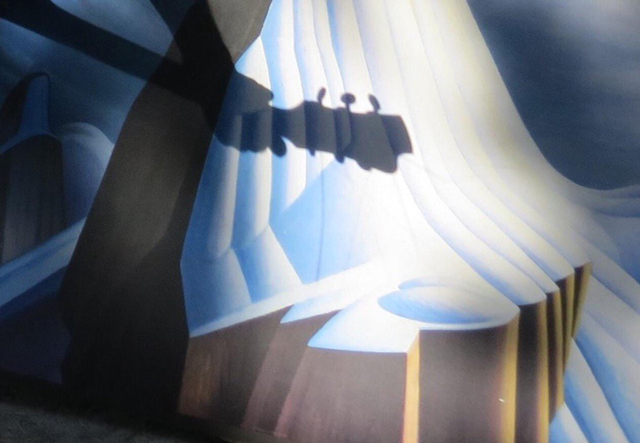
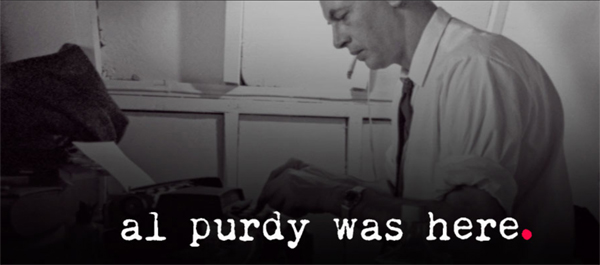
From the producer and director comes the news that the Al Purdy Was Here film will be released at the iTunes store on September 20, 2016.
Al Purdy Was Here
A documentary by Brian D. Johnson
Like CBC Radio and the wilderness-painting tradition, poetry has helped define and connect Canada while locating a certain wintry aloneness in the national condition. One of the last of the two-fisted writers, Al Purdy travelled all the byways before crafting poems for the ages. His skill didn’t mature until he was past 40, but Purdy managed to eke out a poet’s existence for the rest of his life, unsupported by day jobs, grants, or the usual academic resorts.
A case for his greatness is made in this first feature for critic turned director Brian D. Johnson, who uses much archival footage, plus wry observations from contemporaries and students like George Bowering and Margaret Atwood (with the latter seen playing billiards in a beer hall). Some of Purdy’s better words are read or interpreted by musical figures such as Leonard Cohen, Sarah Harmer, Gord Downie, and Bruce Cockburn. [Editor note: Bruce wrote and performs the song, Three Al Purdys.]
Coasting through the 90-minute doc is the diffident figure of Purdy’s spry widow, Eurithe, sanguine about the poor family skills of her late husband, who died at 82 in 2000. He managed to pretty much ignore their son, who had mental problems. And she even more assiduously avoided Brian Purdy, his son from a previous marriage, who made a late appearance in the poet’s life, with mixed results, as recounted here in the younger Purdy’s own beautifully read poem.
The emphasis is less on family than on home—in this case, the Ontario cottage-country A-frame that provided sustenance (largely alcoholic) to subsequent generations of poets. The film looks at the loving restoration of that Roblin Lake cabin, now being used as a place for writers in residence. Purdy left his mark, but unlike Kilroy’s, his reveals much more upon closer inspection.
Credit:
Two-fisted tales inform Al Purdy Was Here by Ken Eisner on January 27th, 2016
Related Links:
Here’s a playlist of a few of Bruce’s songs.
Leave this page open to listen while you browse the rest of the site, please be sure to close it when you leave.